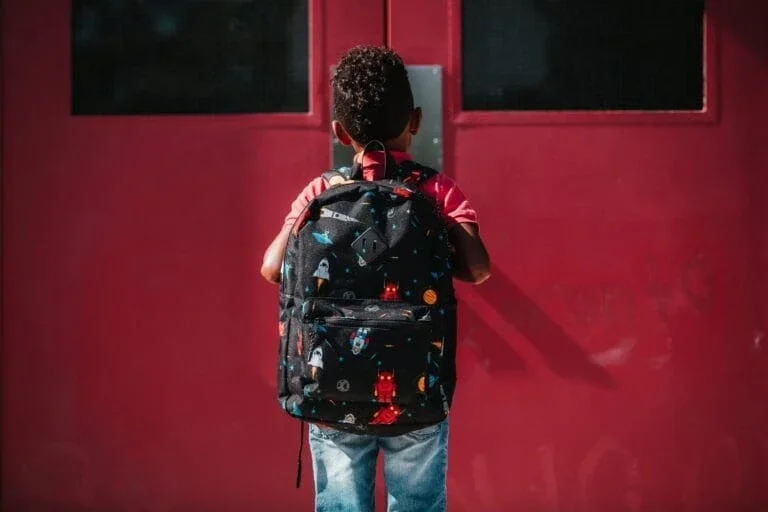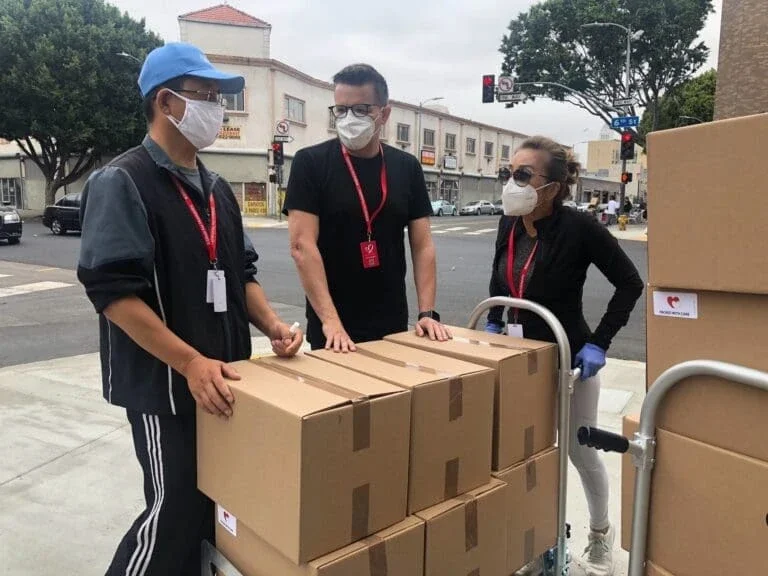Last month, the USDA extended a pandemic response program allowing public schools to serve free meals to all children for the 2020-21 school year. This unprecedented move came thanks to the voices of hundreds of organizations across sectors, from public health and education to the environment and social justice, responding to the serious challenges families and schools continue to face as the economic downturn from the pandemic continues. In effect, the government has established the country’s first ever Universal Free School Meal program for the rest of the current school year.
This potentially game-changing innovation creates an opportunity to tackle a question that child nutrition advocates have long been asking: should we make Universal Free School Meals a permanent policy in the U.S.?
School meals are one of our country’s most powerful tools for delivering nutrition security to children, particularly those whose families are struggling to make ends meet. This year they are more important than ever, at a time when a shocking 14 million children in the U.S. are going hungry on a regular basis.
But even in the best of times, too many struggling families don’t receive adequate nutrition assistance: in 2018, long before Covid-19 disrupted our lives, Feeding America reported that food insecurity affected one in eight Americans (about 37 million people, including 11 million children) and only half of these families met the federal qualification for free school lunch and SNAP.
Some cities like New York City and Houston already provide free meals to all of their students and others are looking to follow suit. From these programs we know that universal meals increase children’s access to healthy food, improve academic performance, and can reduce the risk of obesity.
Now, as we embark on this national experiment to provide free school meals across the country, here are the outcomes we should be watching for:
Universal meals as a tool for better health outcomes
School meals are so essential to child health that our nation’s retired generals and admirals are actively calling for more public investment in school food as a national security issue. Evidence of the impact of school food on child health abounds; one recent study estimates that among children living in poverty, participation in the National School Lunch Program has prevented 500,000 cases of obesity since 2012.

What will the impacts of universal free school meals be on children’s health?
- Will they help distribute health benefits equitably and reduce disparities in the risk of diet-related illness?
- Can they reduce the burden on our health system and generate long-term cost savings?

Universal meals as a tool for racial and economic equity
Since May, an additional 8 million people have fallen into poverty, and food insecurity has doubled. These economic and hunger crises are equity issues that have only gotten worse since the pandemic began, affecting Black and Latinx families at roughly twice the rate of white families.
As we’ve noted previously, school food alone cannot dismantle systemic racism, but it does play a critical role in nourishing the children who have been most underserved by our food system and equipping them to grow, learn, and thrive.
What can we learn this year to maximize the benefits from this program for children who experience inequities?
- Will universal access reduce the stigma that prevents some children, especially teenagers, from accepting the free meals they are entitled to?
- What are the implications of the program for eliminating the “lunch shaming” that has affected children with unpaid meal debts?
Universal meals as a tool for resilience in our school nutrition system
Starting in March, school food workers became heroic first responders seemingly overnight, but the unpredictability and the constant need to adjust and adapt has come at a steep price. According to a new survey, 844 school districts across the country experienced combined losses of more than $483.5 million in their efforts to feed children during the pandemic—and this represents only a fraction of the 13,500 school districts in this country. This financial burden, if unaddressed, will undermine schools’ abilities to continue reaching children with healthy food in the years ahead.

Perhaps more worrying, children’s participation rates plummeted early in the pandemic, as hunger rates spiked, and remained low into the summer. We cannot afford another disruption like this.
Can universal meals create resilience against future shocks and support an equitable recovery across the school nutrition system?
- As schools shift between in-person and hybrid schedules and back again, will the certainty of the universal meal program create stability, increase participation, and reduce financial risk?
- Will schools experience much-needed cost savings without the burden of tracking and counting which students qualify for free or reduced-price meals?
At The Rockefeller Foundation, we are proud to support organizations like Urban School Food Alliance and FoodCorps that have made universal school meal access central to their policy visions, and will continue to invest in schools as anchors of community health. We also believe that schools—equipped with the right resources—can play a transformative role in our food system by directing their food purchasing dollars in support of local economies, BIPOC farmers and businesses, and sustainable production practices. We’ll write more about this in a future blog post.
Many child health and school nutrition experts have been advocating for Universal Free School Meals for decades. Let’s use the months ahead to decide whether it is time to double-down on the USDA’s temporary commitment by permanently providing school meals to all children as an investment in a healthy, equitable, and resilient future.
Related Updates

Reset the Table: Meeting the Moment to Transform the U.S. Food System
While Covid-19 and the resulting economic downturn made the negative consequences of the food system worse and more obvious, the pandemic did not create them and its end will not solve them. Covid-19 has, however, increased both the imperative and the opportunity to address these flaws and limitations once and for all. Now is the moment to transform the U.S. food system.
More